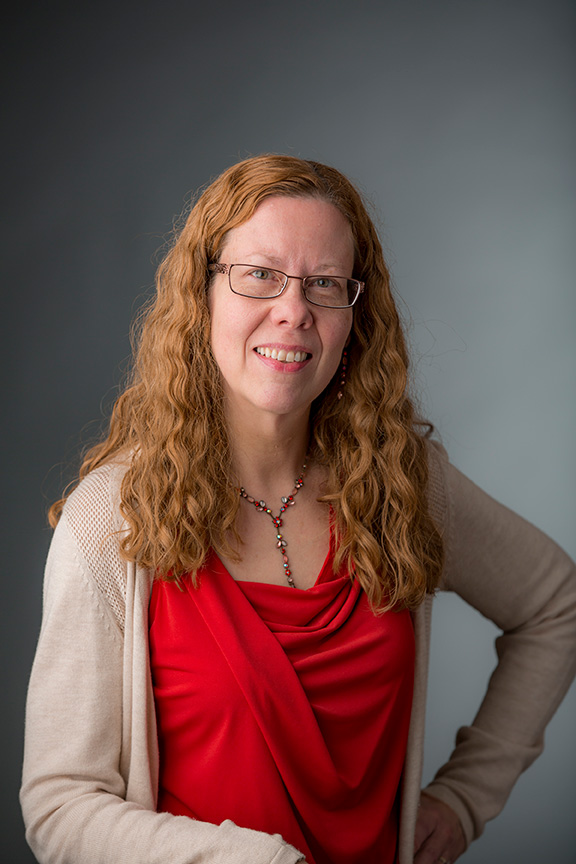Living Life: Five Minutes with Marie Madigan
Marie Madigan is Assistant Professor in the Undergraduate Division of the School of Health Sciences.

“From the time I was a small child I was always fascinated by living things,” says assistant professor Marie Madigan, who currently teaches biology for the undergraduate division of the School of Health Sciences.
For ten years, Marie—who earned her bachelor’s in biology from Fordham University—did biomedical research for The Population Council, a division of the World Health Organization (WHO), where she gained experience in contraceptive research and reproductive biology and began investigating the expression and regulation of testicular proopiomelanocortin, inhibin and activin genes.
That decade’s worth of research is now coming in handy for her current project with SHS professor and researcher Dr. Michael Papetti, whose research is focused on identifying the mechanism of action of vitamin D on colon cell gene regulation. “There’s been a lot of research in general that shows that Vitamin D has a protective role in the development of colon cancer,” explains Professor Madigan. “It was first noticed that the farther away you live from the equator, the more likely you are to get colon cancer, because you get less sun exposure, which is needed for Vitamin D production in the skin. Other studies have found that a Western diet—high in fat, low in calcium and Vitamin D—also increases the risk.”
So what’s the secret of vitamin D? A lot of evidence indicates that vitamin D signaling is important in preventing potentially tumorigenic (capable of forming a tumor) cells from growing out of control. Therefore, it may be critical in stopping the progression to cancer at a very early stage, even before a patient is diagnosed with the disease.
However, there is no “typical” cell when it comes to colon cancer. “There are different cell lines and some of them have different properties than others,” says Madigan.
Professor Madigan cultures a colon epithelial cell line, Caco 2, in the lab. She grows the cells in petri dishes and applies Vitamin D treatments. But what she’s really interested in are the proteins that interact with Vitamin D when the vitamin enters the cell. When Vitamin D is absorbed by the colon epithelial cells, it binds to the Vitamin D Receptor (VDR) and migrates with it from the cytoplasm of the cell into the nucleus. In the nucleus, VDR partners with another receptor and recruits additional interacting proteins, forming a larger complex. The resulting complex binds to Vitamin D target genes, causing these genes to turn off or on.
After the addition of Vitamin D, she harvests the cells and extracts their proteins to determine which proteins might be helping vitamin D to transmit signals inside the cell to help it adopt a less tumorigenic state.
“This will give a broader understanding of how Vitamin D activates or inhibits its target genes that could protect against the development of cancer. It’s a long road, but it’s fascinating.”

